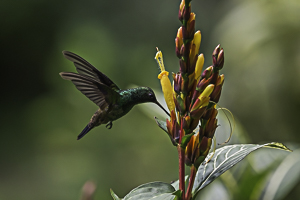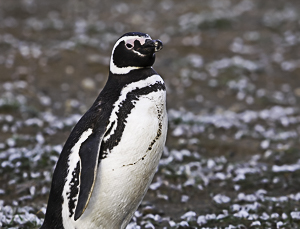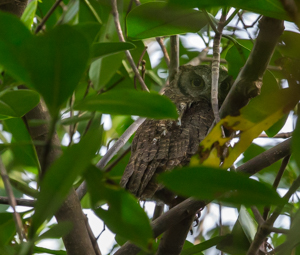Birds from the Eastern Caribbean and Elsewhere
Birds by Order:
There are 28 bird orders found in the world. Order is the 5th in descending order of Taxonomic Rank (Domain, Eukarya; Kingdom, Animalia; Phylum, Chordata; Class, Aves; Order; Family; Genius; Species). Most bird Orders have a few to at most a dozen families with the exception of the Order - Passeriformes which has 82 Families. I have listed only those Orders where i have examples.
A good reference for this information is - https://www.bto.org/birdfacts/families_old_order
Apodiformes - Hummingbirds, Swifts
The birds in this order are very small and have short legs and tiny feet, in fact the word apodiformes means "footless" in Latin. Unlike other birds that have scales or scutes on their feet, the feet of the birds in this order are bare skin with no scales. They have long primary feathers and short secondary feathers. Their young are blind, naked, and helpless at birth.
Perhaps the most spectacular birds in the Easter Caribbean are the hummingbirds. They are some of the most difficult to photograph. The combination of their fast movement and rapid wing movements with low light, taxes many cameras. Good pictures are often luck rather than design. Trinidad has the largest number of species at 17, but most of the other islands have three or four.
Passeriformes - Wood Creepers, Ovenbirds, Antbirds, Cotingas, Manakins, Tyrants, Swallows, Pipits, Wrens, Mockingbirds, Thrushes, Warblers, Peppershrikes, Orioles, Bananaquits, Honeycreepers, Tanagers and Finches
The Passeriformes is the largest and most diverse commonly recognized order of birds. The Passeriformes (or ‘passerine’ birds) are synonymous with what are commonly known as "perching birds". This is the largest order of birds. In fact, over half of the 10,000 known species of birds in the world are in this order. Passeriformes are also known as perching birds.
Perching birds have three unwebbed toes in the front and one strong, flexible toe in the back called the hallux that lets them perch on tree branches. Most species of perching birds have 12 tail feathers. Perching birds are found in all parts of the world and they come in a wide variety of colors, patterns, shapes, and sizes! Most chicks in this order are completely featherless and helpless when they hatch and must be fed by their parents.
We encounter these birds from the deepest forests to the gardens around houses.
Pelecaniformes - Tropicbirds, Pelicans, Boobies, Cormorants, Anhingas, Frigatebirds
The Pelecaniformes is an order of medium-sized and large waterbirds found worldwide. Most have a bare throat patch (gular patch), and the nostrils have evolved into dysfunctional slits, forcing them to breathe through their mouths. They feed on fish, squid or similar marine life. Nesting is colonial, but individual birds are monogamous. The young are altricial, hatching from the egg helpless and naked in most.
Ciconiiformes - Herons, Storks, Ibises, and Spoonbills
Herons, storks and their relatives—bitterns, egrets, spoonbills and ibises—are long-legged, sharp-billed carnivorous birds that inhabit freshwater wetlands. The group, collectively known as the Ciconiiformes, includes 115 species. Most members of the group are solitary hunters that stalk their prey slowly before striking quickly with their powerful bill.
Most herons, storks and their relatives have long and flexible toes that lack webbing. This foot structure makes it easier for the birds to stand in thick mud without sinking and enables them to perch on treetop roosting sites.
During flight, storks can be distinguished from other members of the group by the way they hold their neck. Storks fly with their neck extended straight out in front of their body while most herons and egrets coil their necks into an S shape. Another noticeable characteristic of herons, storks and their relatives is that when they fly, their long legs trail behind them.
Falconiformes - Vultures, Kites, Hawks, Eagles, Osprey, Caracaras, and Falcons
There are four families in this order with around 311 species. These are the birds of prey. They are medium to large-sized and have strong talons; strong, curved beaks; and excellent eyesight.
They are very good fliers and often glide overhead riding on warm air or thermals. Most species make their nests in trees and mate with the same partner year-after-year. They usually live in male/female pairs.
They can be found in all parts of the world except Antarctica, and live in all habitat types including the desert, tundra, taiga, wetlands, and rainforest's.
Charadriiformes - Oystercatchers, Plovers, Sandpipers, Snipes, Stilts, Gulls and, Terns, and Skimmers
A large diverse order of aquatic birds found along seacoasts and inland waters; shorebirds and coastal diving birds; most feed on animal life.
Anseriformes - Flamingos, Screamers, and Ducks
The Anseriformes order comprises about 150 living species in three families: Anhimidae (the screamers), Anseranatidae (the magpie goose), and Anatidae, the largest family, which includes over 140 species of waterfowl, among them the ducks, geese, and swans.
All species in the order are highly adapted for an aquatic existence at the water surface. All are web-footed for efficient swimming (although some have subsequently become mainly terrestrial).
Psittaciformes - Macaws, Parrots, and Parakeets
There are over 350 species of colorful birds in this order. They range in size from 4-40 inches. They have thick, hooked bills; zygodactyl feet with two toes pointing forward and two backward; and muscular tongues. The upper mandible of their bill is hinged to their skull and their lower mandible fits under the upper mandible. Their hinged mandible and muscular tongue allow them to easily move food around in their mouths!
Most species eat seeds and fruits, but some species also eat insects. They are found in South America, Central America, Asia, Australia, and Africa. Most species live in forests in pairs or small groups.
In the Eastern Caribbean they are found deep in the high rain forests and are seen flying overhead early in the morning and in the evening. Usually in pairs and often with considerable squawking.
Many of the islands have there own unique species. I was fortunate to see the both the



Piciformes - Jacamars, Toucans, and Woodpeckers
There are around 409 species in this order found in all parts of the world, except Australia. They range in size from 4-24 inches and come in a variety of colors and patterns.
They have zygodactyl feet. That means they have two toes facing frontwards and two toes facing backwards. This helps them climb tree trunks and move around in trees!
Many species nest in tree cavities and most species eat insects.
While I have seen them in the distance in Trinidad, the photograph above is from Guyana where a pair stopped to pick seeds a short distance from where we were sitting. I happened to have my camera and snapped a few pictures before they flew on.
Sphenisciformes - Penguins
While no penguins are found in the Caribbean Sea, I was fortunate to travel to Argentina and Chile and visited a colony of Magellanic penguins. There were about 20,000 in the colony.
Trogoniformes (Trogons)
Trogons are brightly colored, compact birds with short, rounded wings, broad squared tails, and small legs and feet. Bills are short, stout, and decurved, with serrated tomia (cutting edges) and a wide gape that allows trogons to grasp and swallow prey that is large, squirming, or both.
Trogon feet are notable not only in their small size and relative weakness—the birds are unable to rotate on a perch without using their wings—but for their morphology. On each foot, two toes point forward and two point back, but unlike other zygodactyls, trogons have their first and second toes, rather than the first and fourth, directed backwards. This distinctive adaptation may help trogons cling to the sides of trees like woodpeckers, which have a similar toe arrangement.
Adult male trogons are among the most brilliantly colored of all tropical birds. Their notably soft, dense plumage is a brilliant green, blue, or violet on the upper body and chest, with yellow, orange, pink, or red underparts providing kaleidoscopic contrast. In American and African trogons, and one Asian species, the upper colors are iridescent, changing hue dramatically depending on the angle of light. Many trogons have distinctive barred or vermiculated wing panels, colored white on black in males and buff on black in females. The family's dazzling plumage is carried to an extreme in the resplendent quetzal (Pharomachrus mocinno), whose spectacular uppertail coverts are up to 25.6 in (65 cm) long.
Females are plainer, with browns and grays replacing the greens and blues of males. Female underparts, however, are often as brightly colored as those of males. Juveniles are mottled brown with white and buff spotting.


Strigiformes (Owls)
Owls possess large, forward-facing eyes and ear-holes, a hawk-like beak, a flat face, and usually a conspicuous circle of feathers, a facial disc, around each eye. The feathers making up this disc can be adjusted to sharply focus sounds from varying distances onto the owls' asymmetrically placed ear cavities. Most birds of prey have eyes on the sides of their heads, but the stereoscopic nature of the owl's forward-facing eyes permits the greater sense of depth perception necessary for low-light hunting. Although owls have binocular vision, their large eyes are fixed in their sockets—as are those of most other birds—so they must turn their entire heads to change views. As owls are farsighted, they are unable to clearly see anything within a few centimeters of their eyes. Caught prey can be felt by owls with the use of filoplumes—hairlike feathers on the beak and feet that act as "feelers". Their far vision, particularly in low light, is exceptionally good.


















